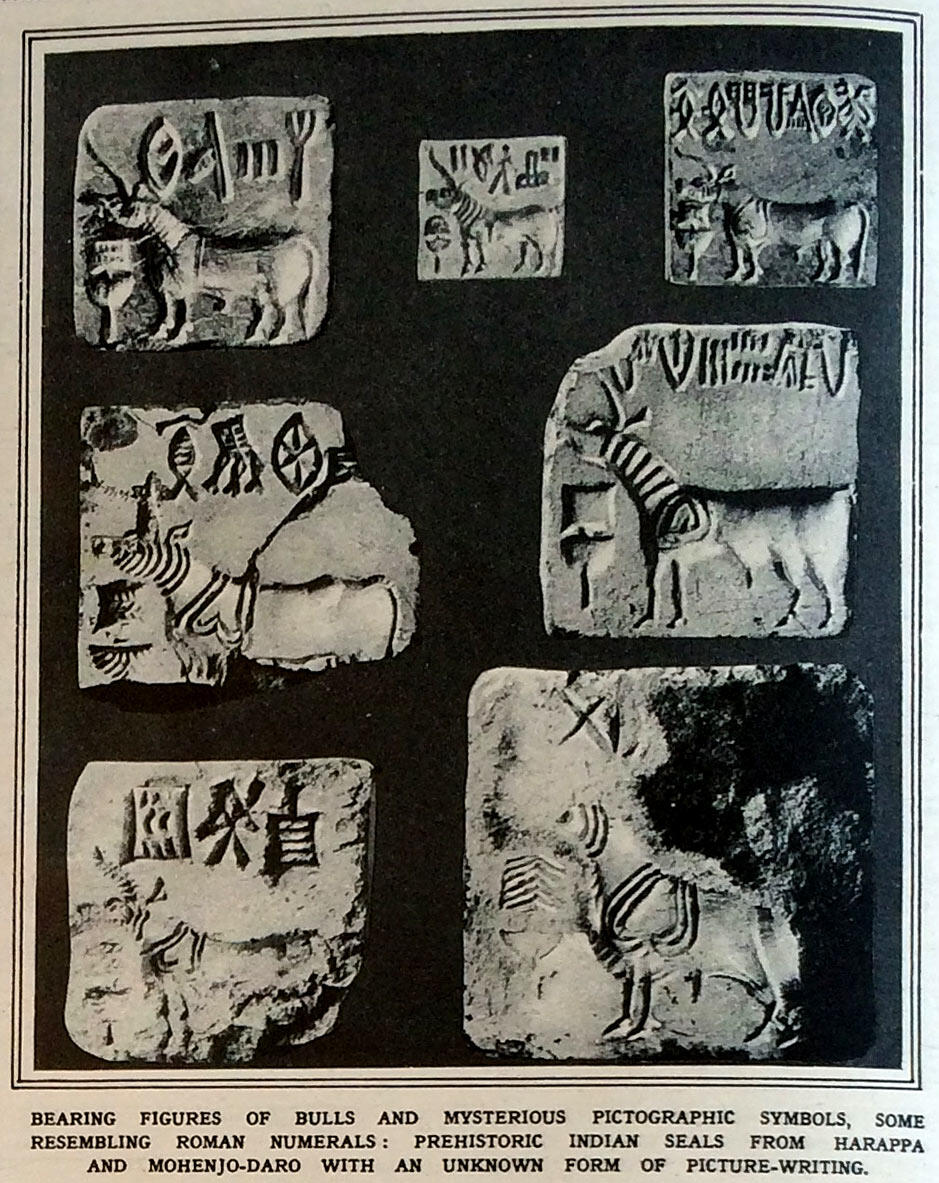March 4th, 2015
The splash of the new. Pictures of mysterious seals from Harappa had appeared in specialized journals, but no composite picture of seals had been offered to the masses until September 24, 1924. This set of seals from the Illustrated London News were the vehicle. From the very beginning, the face of the unicorn was the face of the Indus civilization, and that is probably how its rulers had intended it to be.
Sir John Marshall, who published the findings wrote "The animal most often represented on the seals is the apparently single-horned beast . . .. There is a possibility, I think, that the artist intended to represent one horn behind the other. In other animals, however, the two horns are shown quite distinctly. In some respects the body of this beast, which is always a male, resembles that of an antelope of heavy build, such as the eland or oryx, and in others that of an ox. The long tuffed tail may belong to either class. The horn is sometimes smooth . . . sometimes it has transverse ridges. In the latter case, the possibility of the creature being an ox is ruled out. The long pointed ears are also characteristic of the antelope. Perhaps we have here a fabulous animal which is a composite of the ox and antelope. And yet to the casual eye there is nothing fantastic about it, as about some of the other animals represented on seals; nor does it in any way resemble the unicorn of heraldry, which is made up of different parts of a number of animals, though it must be noted that the traditional unicorn was supposed to have originated in India" [Mohenjo-daro and The Indus Civilization, Vol. II., p. 382].
See also Unicorn Seal and Perfectly Cut Unicorn Seal.

